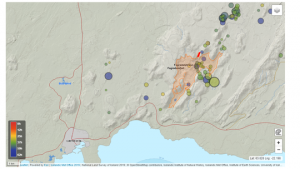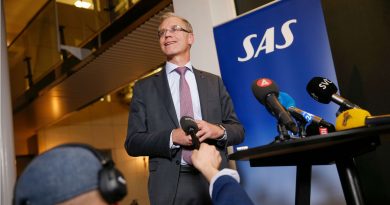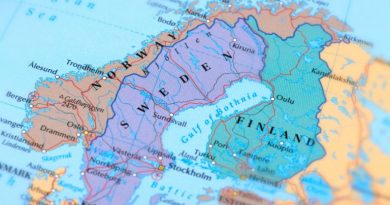Pressure still high, authorities continue to monitor Iceland eruption site

Icelandic authorities continue to monitor the Fagradalsfjall volcano after its eruption on Wednesday, saying there’s still a lot of pressure that needs to be surveyed.
“The seismicity is less than when the eruption started but the pressure is still quite high so we’re keeping an eye out for if another crater or fissure opens up somewhere else,” Lovisa Mjoll Gudmundsdottir, a Natural Hazard Specialist at the Icelandic Meteorological Office, told Eye on the Arctic Thursday afternoon local time.
The volcano, located near the town of Grindavik on the Reykjanes peninsula in the southwest part of the country, erupted Wednesday at 13:18 GMT.
Gudmundsdottir said conditions remain similar on Thursday so far.
“The eruption is pretty much the same except the fissure is not as thick— it’s now around 130 metres instead of around 300 hundred metres yesterday,” she said.
Iceland’s public broadcaster RUV has a live feed from Fagradalsfjall, Iceland:
Small earthquakes continuing
The site is 15 km from Keflavik International Airport and about 25 km from the Reykjavik metropolitan area.
The site of the eruption is about one kilometre northeast of the main crater active during an eruption last year which lasted from March until September.
“Around 400 earthquakes have been measured and they are fewer and smaller than before the eruption,” the Icelandic Meteorological Office said in a statement Thursday morning local time. “That is expected if compared to the eruption that was last year in Fagradalsfjall.”
“We’re looking at the tremor plots because in the previous eruption, the tremor plots went down prior to new openings so we’re keeping our eye on that,” Gudmundsdottir added.

In a news release on Wednesday, the Government of Iceland said the eruption was classed a fissure eruption, a type that does not typically result in large explosions or large amounts of ash put into the atmosphere, and that there’d been no impact on flights in and out of the airport, or threats to communities or infrastructure.
Decreased lava flow
On Thursday, a team, including researchers from the University of Iceland’s Institute of Earth Sciences went to the site to measure the lava flow.
The average thickness at 11am local time was 11.1 meters and 1.60 million. cubic meters in volume.
The lava flow has decreased significantly from yesterday, they said.
“This behavior is very similar to what is usually seen in eruptions in this country; that the eruption is strong at first and then subsides,” the institute said in a statement on their website.
“It is unclear whether this trend will continue, but we will try to measure again tomorrow, visibility permitting.”
People advised against approaching site until further notice

Gudmundsdottir said they will be measuring the gas coming out of the fissure on Friday.
Icelandic authorities are cautioning people to stay away from the site until more surveying and measurements are taken.
“It is likely that pollution can be detected due to the gas release and people are strongly advised against approaching the eruption until further notice as the situation is uncertain,” the Icelandic Meteorological Office said.
“Scientists are evaluating the eruption in the new location and gas monitors will be set up tomorrow.”
Write to Eilís Quinn at eilis.quinn(at)cbc.ca
Related stories from around the North:
Iceland: Volcano near Iceland’s capital, main airport erupts again after 8-month pause, The Associated Press



